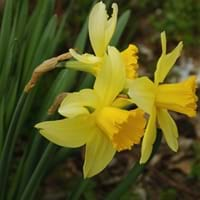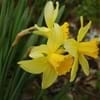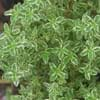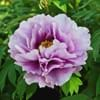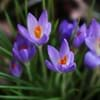Life Span
Perennial
Perennial
Origin
Asia, Central Asia, Eastern Asia, Southwest Europe
Hybrid origin, Mexico, Central America, South America
Types
Accent, Acropolls, Cassata,Dellbes, Flower parade, Hawera
Not Available
Number of Varieties
Not Available
Habitat
Hillside, Open scrub, River side, Rocky areas, Scrubs, Woods
Coastal Regions
USDA Hardiness Zone
3-9
11-15
Sunset Zone
A2, A3, 1a, 1b, 2a, 2b, 3a, 3b, 4, 5, 6, 7, 8, 9, 10, 11, 12, 13, 14, 15, 16, 17, 18, 19, 20, 21, 22, 23, 24
A1, A2, A3, H1, H2, 1a, 1b, 2a, 2b, 3a, 3b, 4, 5, 6, 7, 8, 9, 10, 11, 12, 13, 14, 15, 16, 17, 18, 19, 20, 21, 22, 23, 24
Habit
Clump-Forming
Upright/Erect
Flower Color
Ivory, Lemon yellow, Peach, White, Yellow, Yellow green
Yellow
Flower Color Modifier
Bicolor
Bicolor
Fruit Color
Not Available
Red
Leaf Color in Spring
Green
Green, Dark Green
Leaf Color in Summer
Green
Green, Dark Green
Leaf Color in Fall
Green
Green, Dark Green
Leaf Color in Winter
Green
Green, Dark Green
Plant Season
All year
Spring, Summer, Fall
Sunlight
Part sun
Full Sun
Type of Soil
Clay, Loamy, Sandy
Loam, Sand
The pH of Soil
Acidic
Neutral
Soil Drainage
Well drained
Well drained
Bloom Time
Early Spring, Late Spring, Spring
Indeterminate
Tolerances
Black Walnut Toxicity
Drought
Where to Plant?
Ground
Container, Ground
How to Plant?
From bulbs
Grafting, Seedlings
Plant Maintenance
Medium
Medium
Watering Requirements
It cannot sustain wet-feet, Keep the ground moist but not water-logged, Water Deeply, Water when soil is dry
Needs more water during establishment
In Summer
Lots of watering
Lots of watering
In Spring
Moderate
Moderate
In Winter
Average Water
Average Water
Soil Type
Clay, Loamy, Sandy
Loam, Sand
Soil Drainage Capacity
Well drained
Well drained
Sun Exposure
Part sun
Full Sun
Pruning
Cut or pinch the stems, Prune to control growth, Remove dead leaves, Remove dead or diseased plant parts
Pinch or prune as they grow to promote branching and bushiness
Fertilizers
All-Purpose Liquid Fertilizer
14-14-14 Fertilizer, Compost
Pests and Diseases
Basal rot, Crown rot, Fire, Leaf spot, Scorch, Viruses
Anthracnose, Aphids, Red blotch, Rust
Plant Tolerance
Drought
Heat Tolerance, Salt and Soil Compaction
Flower Petal Number
Single, Double
Single
Fragrant Bark/Stem
No
Yes
Foliage Texture
Medium
Medium
Foliage Sheen
Matte
Matte
Attracts
Not Available
Aphids, Not Available, Squirrels
Allergy
Asthma, Rhinoconjunctivitis
Stomach pain, Vomiting
Aesthetic Uses
Showy Purposes
Used in parkland
Beauty Benefits
Not Available
Anti-ageing, Blackheads, Reduce Bruises
Environmental Uses
Air purification
Shadow Tree, Soil protection
Medicinal Uses
Asthma, Cold, Cough, Vomiting
Dehydration, Diabetes, Diarrhea, Nutrients, Weight loss
Part of Plant Used
Flowers, Leaves
Fruits
Other Uses
Showy Purposes
Application in Handicrafts, Food for animals, Showy Purposes
Used As Indoor Plant
No
No
Used As Outdoor Plant
Yes
Yes
Garden Design
Not Available
Edible, Herb, Vegetable
Botanical Name
Narcissus
Manilkara zapota
Common Name
Daffodil
sapodilla , chikoo, Sapota
In German
Narzisse
Breiapfelbaum
In French
Jonquille
Sapotillier
In Spanish
Narciso
chicle
In Greek
ασφόδελος
sapodilla
In Portuguese
Abrótea
sapodilla
In Polish
żonkil
Pigwica właściwa, sapodilla
In Latin
Asphodelus
sapodilla
Phylum
Magnoliophyta
Magnoliophyta
Class
Liliopsida
Magnoliopsida
Order
Asparagales
Ericales
Family
Amaryllidaceae
Sapotaceae
Clade
Angiosperms, Monocots
Angiosperms, Asterids, Eudicots
Tribe
Narcisseae
Sapoteae
Subfamily
Amaryllidoideae
Sapotoideae
Importance of Daffodil and Sapodilla
Want to have the most appropriate plant for your garden? You might want to know the importance of Daffodil and Sapodilla. Basically, these two plants vary in many aspects. Compare Daffodil and Sapodilla as they differ in many characteristics such as their life, care, benefits, facts, etc. Every gardener must at least have the slightest clue about the plants he wants to plant in his garden. Compare their benefits, which differ in many ways like facts and uses. The medicinal use of Daffodil is Asthma, Cold, Cough and Vomiting whereas of Sapodilla is Dehydration, Diabetes, Diarrhea, Nutrients and Weight loss. Daffodil has beauty benefits as follows: Not Available while Sapodilla has beauty benefits as follows: Not Available.
Compare Facts of Daffodil vs Sapodilla
How to choose the best garden plant for your garden depending upon its facts? Here garden plant comparison will help you to solve this query. Compare the facts of Daffodil vs Sapodilla and know which one to choose. As garden plants have benefits and other uses, allergy is also a major drawback of plants for some people. Allergic reactions of Daffodil are Asthma and Rhinoconjunctivitis whereas of Sapodilla have Stomach pain and Vomiting respectively. Having a fruit bearing plant in your garden can be a plus point of your garden. Daffodil has no showy fruits and Sapodilla has showy fruits. Also Daffodil is not flowering and Sapodilla is not flowering . You can compare Daffodil and Sapodilla facts and facts of other plants too.
